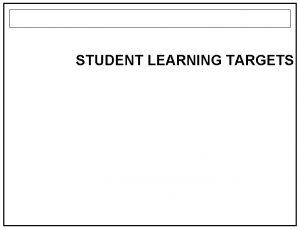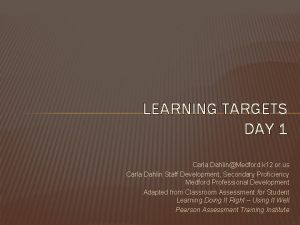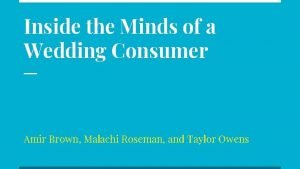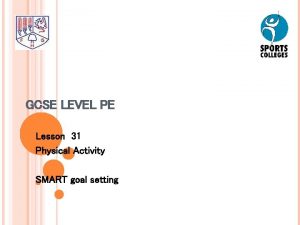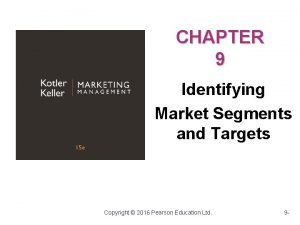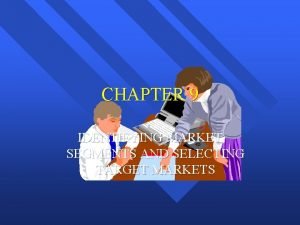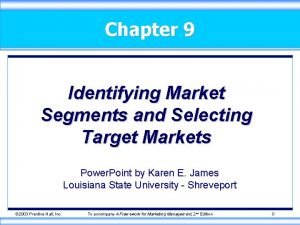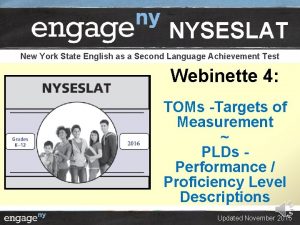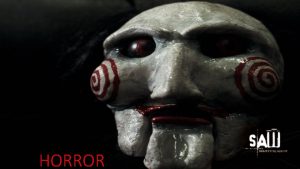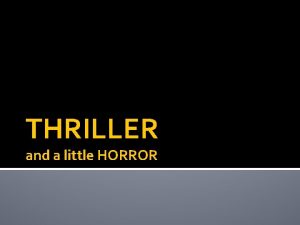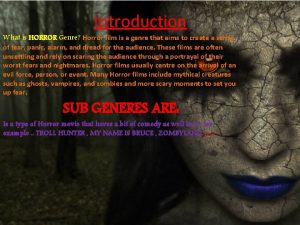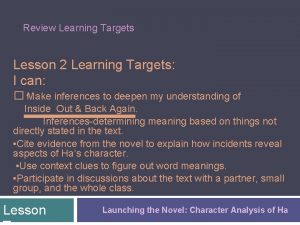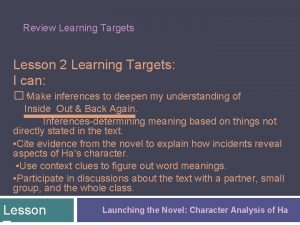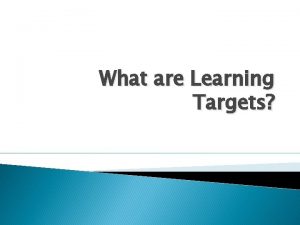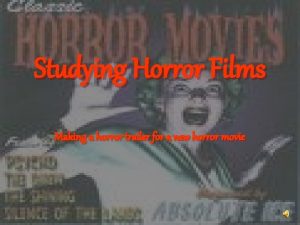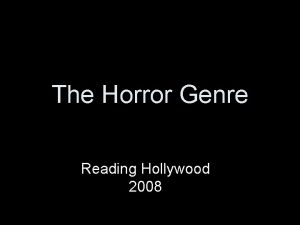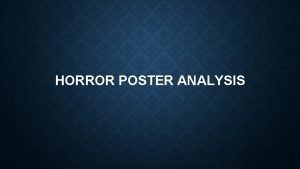INTRODUCTION INTO HORROR UNIT HORROR UNIT LEARNING TARGETS















- Slides: 15

INTRODUCTION INTO HORROR UNIT

HORROR UNIT LEARNING TARGETS I can cite strong and thorough evidence that supports my inferences and analysis of a text. I can analyze the development of themes throughout a text, including how they interact or build upon each other. I can articulate how horror can be a reflection of the fears and anxieties in culture. I can evaluate figurative language within a text in order to determine the impact on tone, mood, and theme.

“THE MASQUE OF THE RED DEATH” By: Edgar Allen Poe

PLOT LINE OF THE STORY- LEAVE 1 WHOLE PAGE IN YOUR NOTEBOOK

PLOT LINE ELEMENTS • Exposition/ Introduction- used to introduce background information about events, settings, characters etc. to the audience or readers. • Rising Action(s)- a series of relevant incidents that create suspense, interest and tension in a narrative. In literary works, a rising action includes all decisions, characters’ flaws and background circumstances that together create turns and twists leading to a climax.

PLOT LINE ELEMENTS • Conflict- literary element that involves a struggle between two opposing forces usually a protagonist and an antagonist. • Climax- is that particular point in a narrative at which the conflict or tension hits the highest point. • Resolution/ Conclusion- the resolution of the issue of a complicated plot in fiction

TRACK THE MAIN CHARACTERS IN THE STORYLEAVE 1 WHOLE PAGE IN YOUR NOTEBOOK Character Quote Describing The Character

THEMES IN THE STORY • a main idea or an underlying meaning of a literary work that may be stated directly or indirectly.

THEMES IN THE STORY- LEAVE 1 WHOLE PAGE IN YOUR NOTEBOOK Themes I Saw Why I believe this is a theme…

SETTING OF THE STORY- LEAVE 1 WHOLE PAGE IN YOUR NOTEBOOK • Use your 5 senses to describe the setting and create a picture in your mind… Sense Sight Touch Hear Smell Taste Quote/ Description from the story

POINT OF VIEW IN THE STORY • the angle of considering things, which shows us the opinion, or feelings of the individuals involved in a situation. In literature, point of view is the mode of narration that an author employs to let the readers “hear” and “see” what takes place in a story, poem, essay etc.

POINT OF VIEW IN THE STORY • 1. First person point of view involves the use of either of the two pronouns “I” and “we”. “I felt like I was getting drowned with shame and disgrace. ” 2. Second person point of view employs the pronoun “you”. “Sometimes you cannot clearly discern between anger and frustration. ” 3. Third person point of view uses pronouns like “he”, “she”, “it”, “they” or a name. “Mr. Stewart is a principled man. He acts by the book and never lets you deceive him easily. ”

POINT OF VIEW IN THE STORY- LEAVE 1 PAGE IN YOUR NOTEBOOK What point of view is the story written from? Quotes from the story

WHAT IS THE OVERALL MAIN IDEA OF THE STORY? • the most important or central thought o f a paragraph or larger section of text, which tells the reader what the t ext is about

FOR EVERY STORY IN THIS UNIT WE WILL BE FIGURING OUT WHAT THE MAIN IDEA OF THE STORY IS… • On your interim exams, that is what everyone in the classroom had trouble with. • My goal for the next interim- AT LEAST 75% OF YOU WILL BE PROFICIENT AT FINDING THE MAIN IDEA IN THE TEXT!!
 Writing learning targets
Writing learning targets Agonist antagonist muscles
Agonist antagonist muscles Finish sketch crime scene
Finish sketch crime scene Knowledge targets
Knowledge targets Learning targets knowledge, reasoning, skill product
Learning targets knowledge, reasoning, skill product Learning target
Learning target Cuadro comparativo entre e-learning b-learning y m-learning
Cuadro comparativo entre e-learning b-learning y m-learning Warehousing department objectives
Warehousing department objectives Jim crow laws in what region or regions did it exist
Jim crow laws in what region or regions did it exist Brides magazine targets consumers who are in
Brides magazine targets consumers who are in Targets of change
Targets of change Smart gcse pe
Smart gcse pe Identifying market segments and targets chapter 9
Identifying market segments and targets chapter 9 Identifying market segments and targets
Identifying market segments and targets Identifying market segments and targets chapter 9
Identifying market segments and targets chapter 9 Nyseslat targets of measurement
Nyseslat targets of measurement
